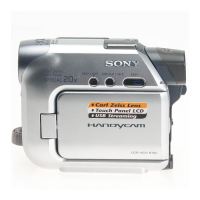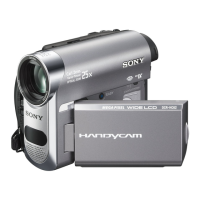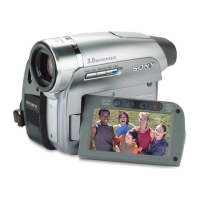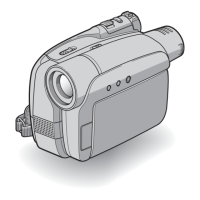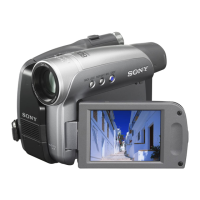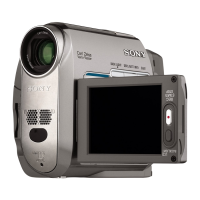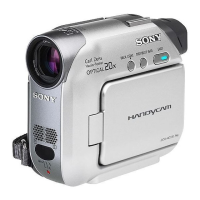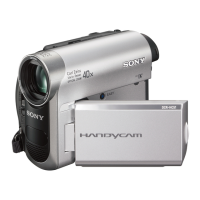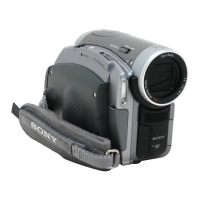
 Loading...
Loading...
Do you have a question about the Sony Handycam DCR-HC90 and is the answer not in the manual?
Essential warnings to prevent fire, shock hazard, and proper handling instructions.
FCC compliance, Canadian ICES-003, and customer support information.
Lists all accessories included with the camcorder for verification.
Step-by-step instructions on how to charge the camcorder's battery pack.
Guides on turning on the device and holding it correctly for stable operation.
Instructions for optimizing the LCD screen and viewfinder for clear viewing.
Explains how to navigate the touch screen and interpret display indicators.
Procedure for setting the camcorder's internal clock and date.
Instructions for loading recording media (mini DV tape and Memory Stick Duo).
How to choose between 16:9 wide and 4:3 standard aspect ratios for recording.
Simplified operation mode for basic recording and playback.
Steps for capturing video footage and still photographs.
How to view recorded video and still images.
Overview of various functions available during recording and playback.
How to access and select options within the camcorder's menu system.
Adjustments for exposure, white balance, focus, and shooting modes.
Options for image quality, size, burst mode, and formatting for Memory Stick Duo.
Applying digital effects, slide shows, and cinematic features to recordings.
Basic settings like recording mode, audio options, and display adjustments.
Configuration for clock, world time, and display language.
Adding, deleting, and arranging menu items for quick access.
How to connect the camcorder to external video devices for playback.
Copying recorded content to VCRs, DVD recorders, or other devices.
Capturing video or TV programs onto the camcorder's tape or Memory Stick.
Transferring video or still images from tape to a Memory Stick Duo.
Adding new audio tracks to existing recordings on tape.
Connecting to a PictBridge printer to print still images directly.
Identification and function of various connection ports on the camcorder.
Introduction to software operations and computer connection methods.
Procedures for installing the Picture Package software and guide.
How to view transferred video and still images using computer software.
Steps to burn recorded footage from tape onto a DVD.
Using the camcorder for signal conversion from VCR to computer.
Solutions for power, button, and operation mode problems.
Troubleshooting power loss, charging lamp, and battery indicators.
Addressing issues with unknown pictures, missing indicators, and touch panel errors.
Resolving problems related to tape ejection, media recognition, and data deletion.
Solutions for recording errors, media full, and compatibility issues.
Explains common warning symbols and error messages for quick diagnosis.
Information on power supply compatibility and TV color systems.
Details on compatible tapes, copyright signals, and tape handling.
Information on Memory Stick compatibility, formats, and usage notes.
Explanation of battery technology, charging, and effective usage.
Details on the i.LINK digital interface standard and its features.
Guidance on cleaning, care, storage, and handling of the camcorder.
Technical details including system, image, lens, and connector specifications.
Alphabetical list of topics for quick reference.

